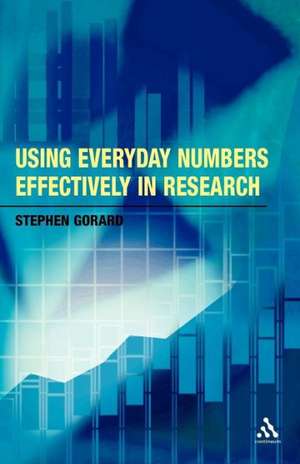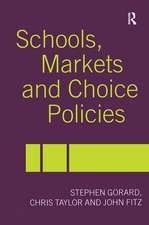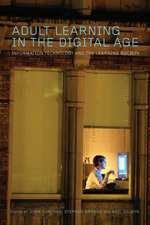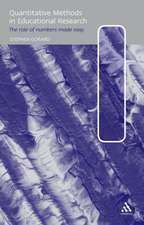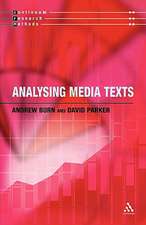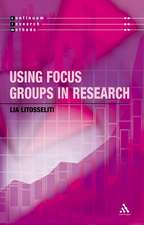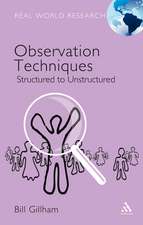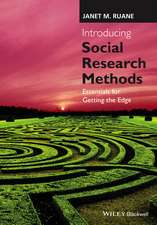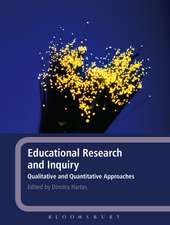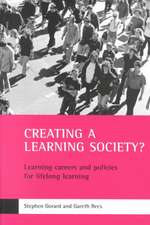Using Everyday Numbers Effectively in Research
Autor Stephen Gorarden Limba Engleză Paperback – 3 apr 2006
Preț: 220.27 lei
Nou
Puncte Express: 330
Preț estimativ în valută:
42.16€ • 45.81$ • 35.44£
42.16€ • 45.81$ • 35.44£
Carte tipărită la comandă
Livrare economică 21 aprilie-05 mai
Preluare comenzi: 021 569.72.76
Specificații
ISBN-13: 9780826488305
ISBN-10: 0826488307
Pagini: 114
Dimensiuni: 138 x 216 x 10 mm
Greutate: 0.15 kg
Editura: Bloomsbury Publishing
Colecția Continuum
Locul publicării:London, United Kingdom
ISBN-10: 0826488307
Pagini: 114
Dimensiuni: 138 x 216 x 10 mm
Greutate: 0.15 kg
Editura: Bloomsbury Publishing
Colecția Continuum
Locul publicării:London, United Kingdom
Caracteristici
Accessibly and engagingly written without the usual tedium of statistical terminology - probability densities, Gaussian distributions etc.
Cuprins
Preface1. Introducing everyday numbers2. Judgement with everyday numbers3. Defending the use of everyday numbersReferencesIndex
Recenzii
In this short book, Gorard (Univ. of York) argues against using traditional statistical methods in favor of "everyday numerical techniques" in social science research. His underlying theme is threefold: "using veryday numbers in research is easy," they "can lead to important research discoveries," and they inject "a necessary dose of critical realism into claims." Through numerous examples, Gorard attempts to demonstrate that using everyday number techniques is better and clearer in providing the analysis of research. His examples are based on actual data and studies in the educational system in Wales and England. Various areas of basic tatistical research techniques are argued against. Gorard discusses why the mean deviation is a better tool than the standard deviation. Two other areas of statistics that are disputed are the different "levels" of measurement and the use of significance tests. Overall, the book is a short exposition on why not to use traditional statistical methods in research while attempting to demonstrate other options. This book will provide social science researchers with thought-provoking ideas and possibly new ways of thinking about using numbers in their research. Summing Up: Recommended. Upper-division undergraduates through faculty.
